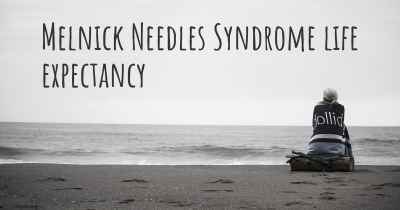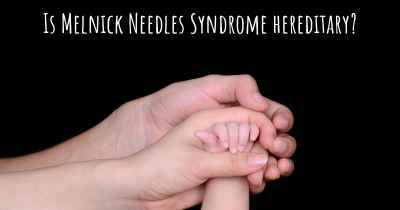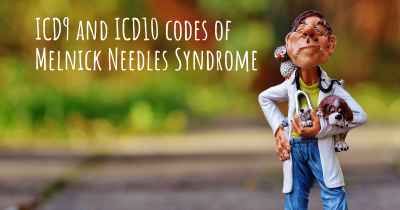What is the history of Melnick Needles Syndrome?
When was Melnick Needles Syndrome discovered? What is the story of this discovery? Was it coincidence or not?

Melnick-Needles syndrome, also known as osteodysplasty, is a rare genetic disorder that affects bone development. It was first described in 1966 by Melnick and Needles, hence the name. This syndrome primarily affects the skeletal system, causing various abnormalities and characteristic facial features. Let's delve into the history of this condition.
The discovery of Melnick-Needles syndrome began with the observation of several patients who exhibited similar physical characteristics and bone abnormalities. Dr. Melnick and Dr. Needles, both pediatric radiologists, encountered these patients and recognized the need for further investigation.
The first documented case of Melnick-Needles syndrome was a male infant born in 1964. He presented with distinct facial features, including a prominent forehead, wide-set eyes, a broad nasal bridge, and a small jaw. Additionally, the infant had skeletal abnormalities such as bowed long bones, thin ribs, and abnormal spinal curvature.
Following this initial case, Dr. Melnick and Dr. Needles encountered several more patients with similar symptoms. They conducted extensive research and published their findings in 1966, officially identifying and naming the condition Melnick-Needles syndrome.
Genetic research played a crucial role in understanding the underlying cause of Melnick-Needles syndrome. In the early years, researchers suspected an X-linked inheritance pattern due to the predominantly male occurrence of the syndrome. However, subsequent studies revealed that the condition is caused by mutations in the FLNA gene, located on the X chromosome.
The FLNA gene provides instructions for producing the filamin A protein, which plays a vital role in skeletal development. Mutations in this gene disrupt the normal function of filamin A, leading to the characteristic bone abnormalities seen in Melnick-Needles syndrome.
Over the years, advancements in genetic testing have allowed for more accurate diagnosis and identification of specific FLNA gene mutations in individuals with Melnick-Needles syndrome. This has facilitated genetic counseling and provided valuable insights into the inheritance patterns of the disorder.
Clinical features of Melnick-Needles syndrome can vary widely, even among affected individuals within the same family. However, some common characteristics include abnormal bone development, particularly in the long bones of the arms and legs, as well as the ribs and spine. These abnormalities can lead to skeletal deformities, joint problems, and impaired mobility.
Individuals with Melnick-Needles syndrome often have distinct facial features, including a prominent forehead, widely spaced eyes, a broad nasal bridge, and a small jaw. They may also experience hearing loss, respiratory difficulties, and dental abnormalities.
Treatment for Melnick-Needles syndrome primarily focuses on managing the symptoms and complications associated with the disorder. This may involve orthopedic interventions to address skeletal abnormalities, hearing aids or cochlear implants for hearing loss, and dental care to address dental malformations.
Given the rarity of Melnick-Needles syndrome, supportive care and early intervention are crucial in improving the quality of life for affected individuals. Regular monitoring and multidisciplinary medical management can help address the various challenges associated with this condition.
In conclusion, Melnick-Needles syndrome is a rare genetic disorder characterized by bone abnormalities and distinct facial features. Dr. Melnick and Dr. Needles first described this condition in 1966, and subsequent research has identified mutations in the FLNA gene as the underlying cause. Advances in genetic testing have improved diagnosis and understanding of the inheritance patterns. While there is no cure for Melnick-Needles syndrome, appropriate medical interventions and supportive care can help manage the symptoms and improve the overall well-being of affected individuals.








